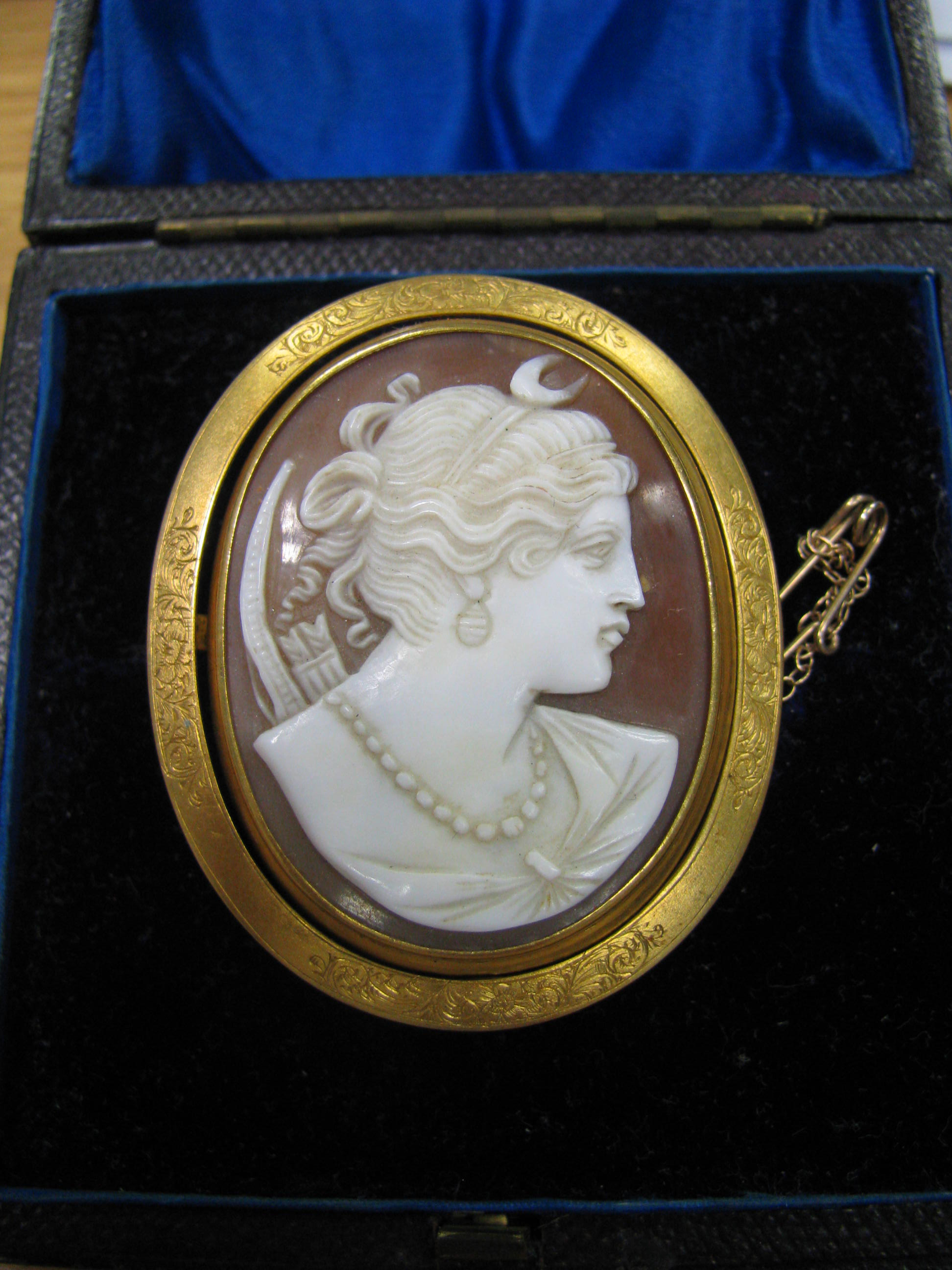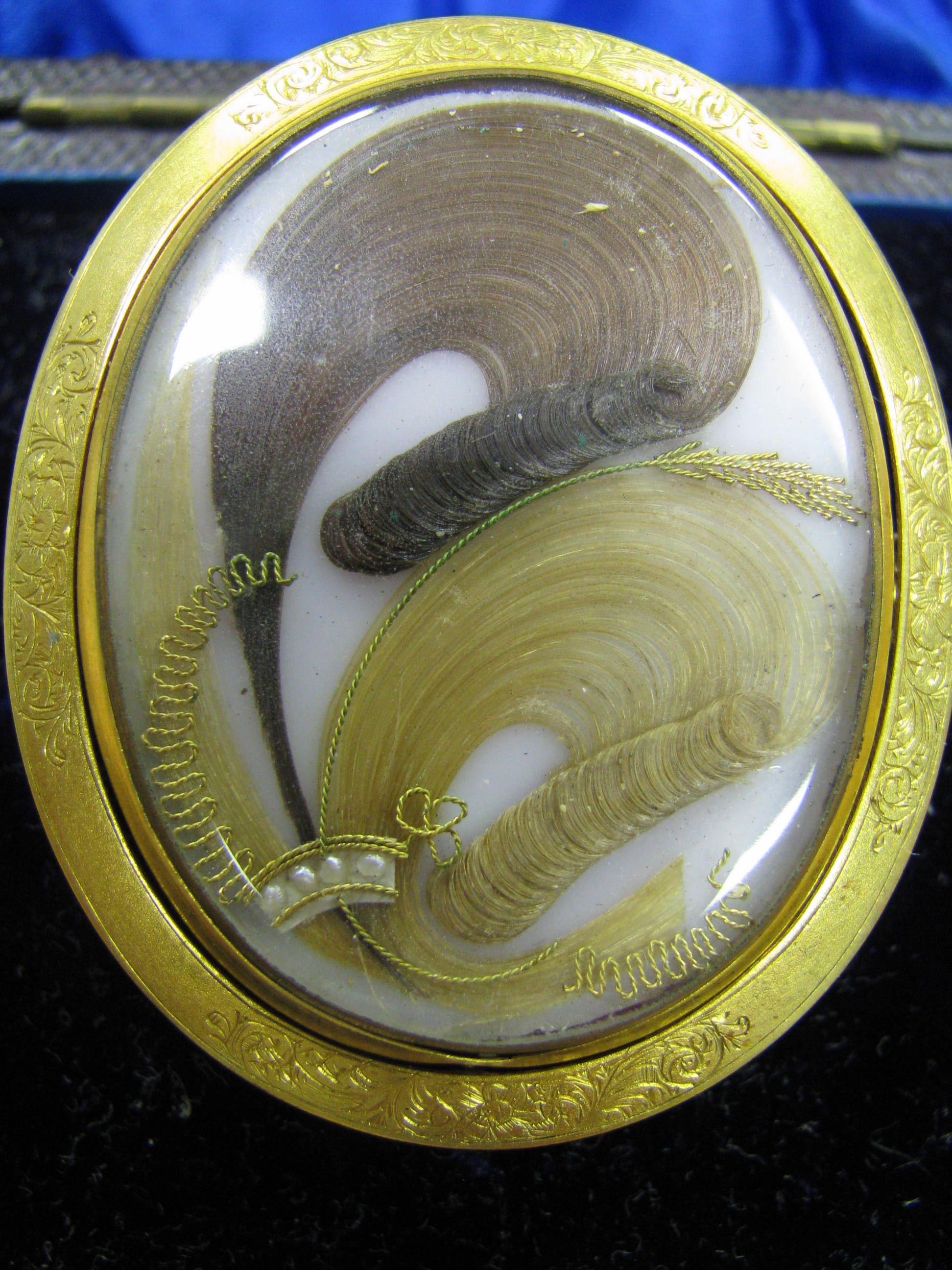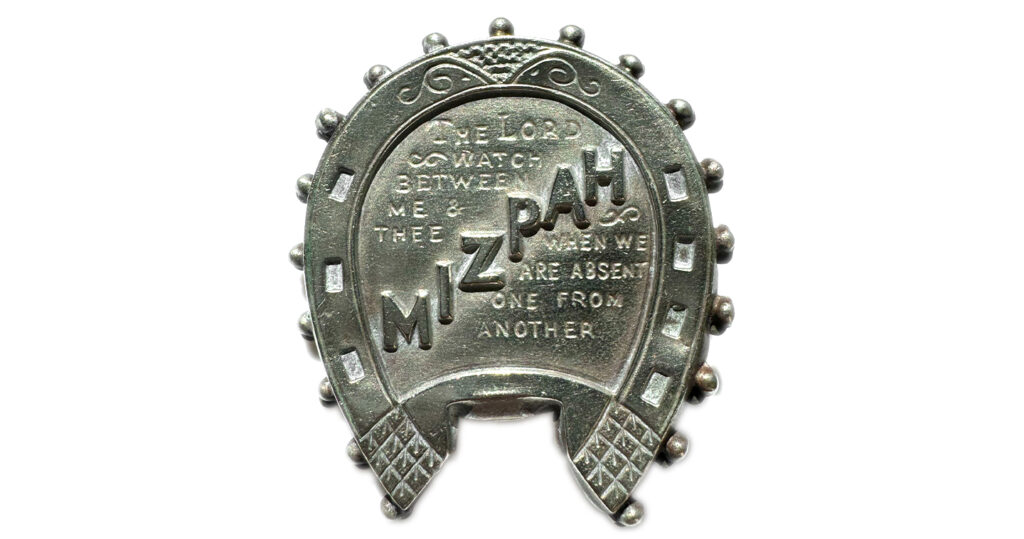A 19th Century Sentimental Cameo Brooch of Artemis Featuring Woven Hair
From the collection of the family of Diana Forsyth comes this wonderful (and pristine) cameo brooch. In a change of pace today, I’m inviting you to join me on a spontaneous evaluation of the piece, rather than spending hours researching, then displaying the knowledge. You’re going for a little walk through my mind, (beware) so let’s begin to have a look at it…
One can’t look at this piece and not be stopped in one’s tracks without noting the beautifully carved shell cameo of the Hellenistic Goddess Artemis. How do we know it’s Artemis? Firstly, the bow and arrow are the most obvious symbols related to her, as she was the Hellenistic goddess of the hunt, childbirth, virginity and nature/wilderness. She also has the crescent moon above her head, which depicts her during later times where she was associated with Selene (Greek moon goddess / Titaness), but she was also associated with subsequent goddesses.
From the style of the hair, nose and costume, you can see the obvious attention to the Greek Neoclassical Revival detail that was become ingrained in the mid-Victorian mind, stemming from a culture that had survived and learned from the previous influx of of the Neoclassical movement beginning in 1760. Basically, this cameo is aware of its history, however, there are also the contemporary flourishes of the necklace and the earrings which make it easier to date.
As to its age, I would suggest around 1850-1860 would be quite a prime period for this piece to have been created.
The cameo is set perfectly in the brooch itself; note how the setting forms around the cameo and doesn’t alter shape for the cameo, as many carved shell cameos look crooked or ‘chipped’ in their settings, when the settings were often constructed to accommodate what there was of the cameo itself. This piece does show high quality.
In the setting, you can see the floral and acanthus Victorian Rococo Revival flourishes creeping in, something which would become more prominent as the 19th century wore on, these designs often took over and become the major motif of brooch settings themselves.
To the reverse, we have all the business. Set on milk glass, this table-worked hair is feathered into the floral ‘Albert Curl’ with two colours. This hair is obviously treated and shows an expert hand at work. On top of the hair, we have the gold wire cipher creating the twisted motifs and culminating in the depiction of the wheat sheaf and the clover. Firstly, we have the clover, which is very small, but there and symbolises good luck. If it were of the four leafed variety, then it is used in sentimental works as a token of affection or ‘be mine’, but here we have three. Then we have the wheat, which is ‘resurrection’ or ‘fertility’. We also have the pearls forming the ‘ribbon’ holding the ‘flowers’ of the hair together, which often represents tears, but in this case defaults back to its art meaning of purity, spiritual transformation, charity, honesty, wisdom and integrity. The pearl was also a lunar symbol for water and the woman, so when combined with the lunar symbol of Artemis, we have greater connection between the hair and the cameo, rather than the choice of Artemis (which the person who commissioned it would certainly have done), becomes clear.
What does it all mean? Put them with Artemis on the front and you have some striking symbolism that quite rightly would have been worn by a lady as a token of love and affection, possibly given by a man (with the combination of the two hair types) or very close family member, such as a mother to encourage fertility, strength, purity/virginity and good luck. All rather proud symbols for a lady making her way in the world, I should think.









